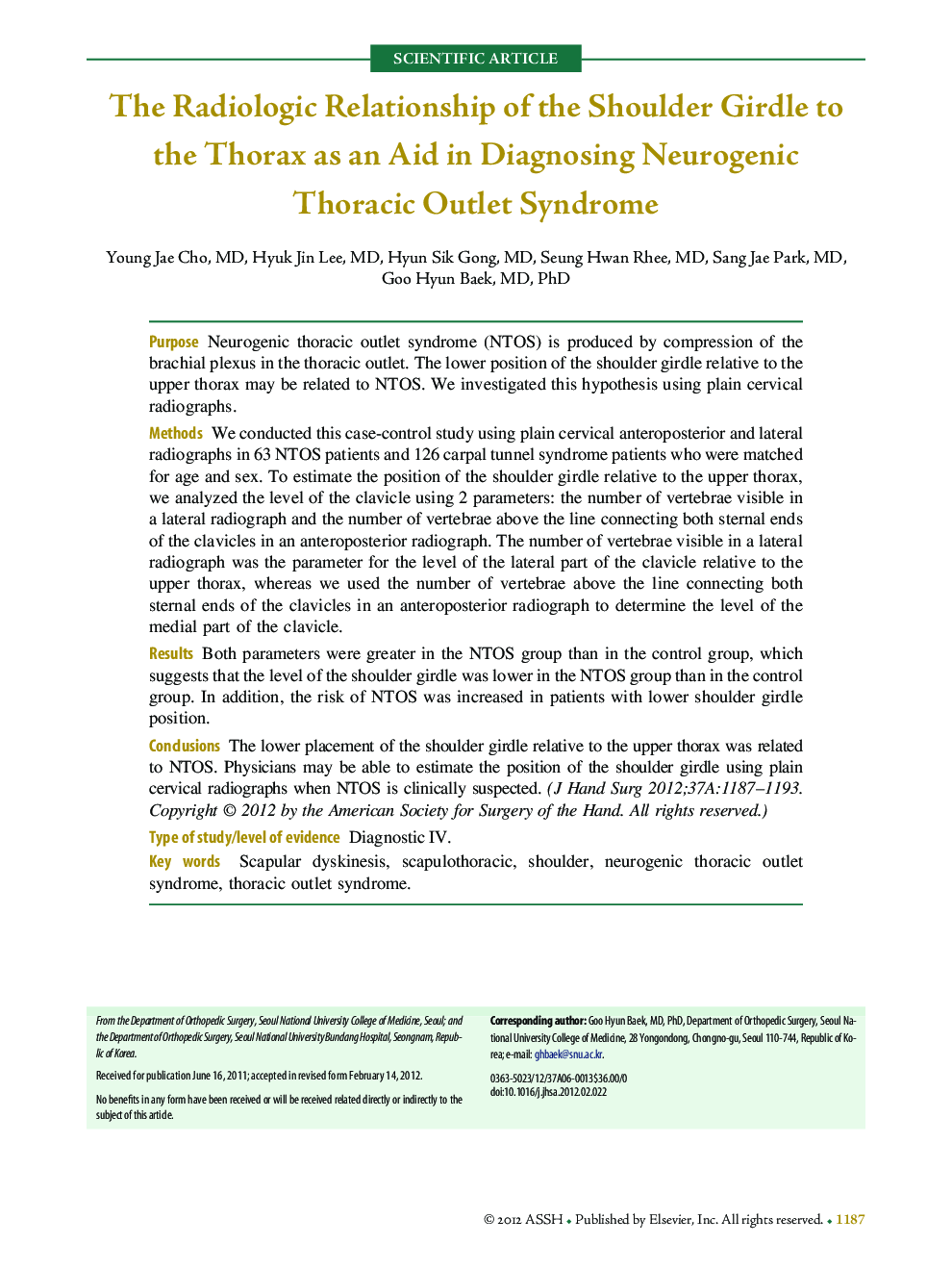| Article ID | Journal | Published Year | Pages | File Type |
|---|---|---|---|---|
| 4068592 | The Journal of Hand Surgery | 2012 | 7 Pages |
PurposeNeurogenic thoracic outlet syndrome (NTOS) is produced by compression of the brachial plexus in the thoracic outlet. The lower position of the shoulder girdle relative to the upper thorax may be related to NTOS. We investigated this hypothesis using plain cervical radiographs.MethodsWe conducted this case-control study using plain cervical anteroposterior and lateral radiographs in 63 NTOS patients and 126 carpal tunnel syndrome patients who were matched for age and sex. To estimate the position of the shoulder girdle relative to the upper thorax, we analyzed the level of the clavicle using 2 parameters: the number of vertebrae visible in a lateral radiograph and the number of vertebrae above the line connecting both sternal ends of the clavicles in an anteroposterior radiograph. The number of vertebrae visible in a lateral radiograph was the parameter for the level of the lateral part of the clavicle relative to the upper thorax, whereas we used the number of vertebrae above the line connecting both sternal ends of the clavicles in an anteroposterior radiograph to determine the level of the medial part of the clavicle.ResultsBoth parameters were greater in the NTOS group than in the control group, which suggests that the level of the shoulder girdle was lower in the NTOS group than in the control group. In addition, the risk of NTOS was increased in patients with lower shoulder girdle position.ConclusionsThe lower placement of the shoulder girdle relative to the upper thorax was related to NTOS. Physicians may be able to estimate the position of the shoulder girdle using plain cervical radiographs when NTOS is clinically suspected.Type of study/level of evidenceDiagnostic IV.
